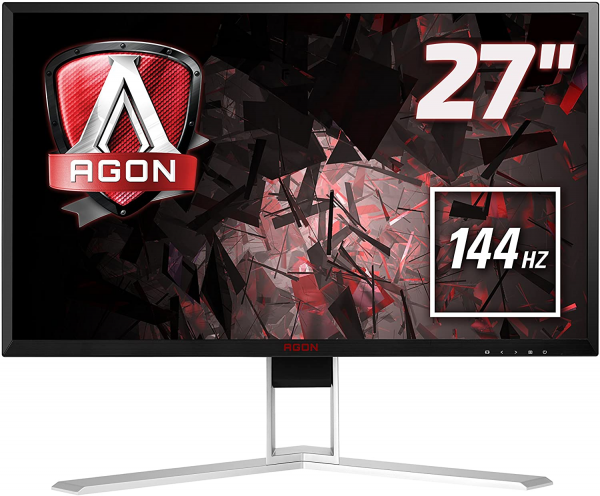AOC
AOC Agon AG271QX, the first AOC player monitor
Aprox. 465€
See specificationsThe new Agon range from AOC currently consists of two references: the AG271QG, IPS and G-Sync, and the AG271QX, TN and FreeSync. It is the latter that we tested in detail.
Positive points
Finish.
Reactivity.
FreeSync compatibility between 30 and 144 Hz.
Exemplary ergonomics.
Full connectivity.
Bad points
No backlight scanning.
Limited contrast ratio.
Reduced viewing angles.
Our review
Presentation
The AOC Agon AG271QX monitor is the first representative of the new range for players from the Taiwanese manufacturer. It embeds all the small refinements of "gamers" monitors with in particular a refresh rate of 144 Hz and compatibility with the adaptive frequency technology FreeSync (AdaptiveSync). The 27-inch TN panel displays a Quad HD definition of 2,560 x 1,440 px, the ergonomics are complete and the connectors are very well supplied. Sold less than 600 €, this model is therefore a credible alternative to the Asus PG279Q (27 ", IPS, QHD, G-Sync) or the Iiyama G-Master GB2788HS (27", TN, FHD, FreeSync), much more affordable . AOC also declines this monitor in G-Sync version, the Agon AG271QG, with an IPS panel and a frequency up to 165 Hz, but for a slightly higher price (800 €).
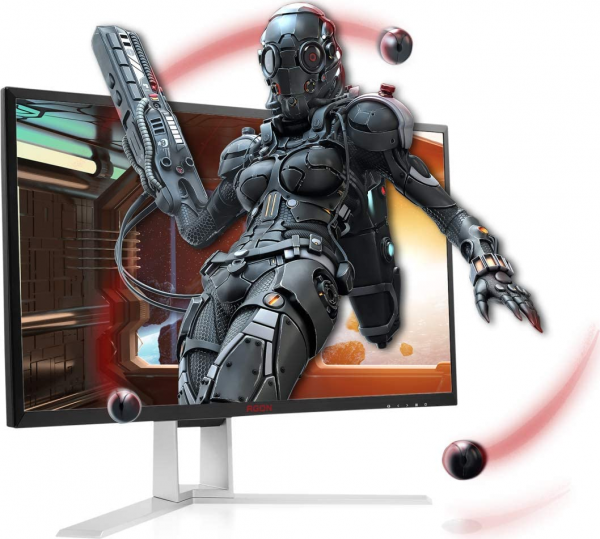
Ergonomics
The aluminum stand is elegant and for once, this player monitor is not over the top. AOC, however, could not miss the color red, but black and aluminum largely dominate. The manufacturer has opted for a matt coating which limits reflections. The 27-inch TN panel displays a Quad HD definition of 2,560 x 1,440 px with a 16: 9 ratio, or a resolution of 109 pixels per inch.
The ergonomics are excellent. The foot is thus adjustable in height by 13 cm, tilts between -3 ° and + 21 °, pivots in portrait mode and even manages the rotation by ± 20 °.
The rear is a little less sober and the monitor here affirms his player side with a clearly visible red banner. Small feature of this model, already seen on BenQ monitors, a small removable lug allows to hang headphones on the side.
The connections are grouped at the back and on the side. Plethoric, it consists of a DisplayPort 1.2 input, two HDMI 2.0 inputs, a DVI input, a VGA input, four USB 3.0 ports including a USB port offering between 1.3 and 1.5 A (yellow), two audio outputs and two audio inputs. This monitor also has two 3 watt speakers whose quality is quite poor. They can troubleshoot, but in no case replace a speaker kit.
The OSD is accessible both via the buttons on the bottom edge of the screen and using the wired remote control provided. The latter - which comes to connect to the Mini-USB port of the screen - allows you to navigate in the OSD and also directly access three presets. AOC did not make any particular effort on the interface and we find the OSD of the other monitors of the brand. It is not as effective as what Asus offers with its joystick. Fortunately, the settings are numerous and allow you to adjust the brightness, contrast, sharpness, gamma, color temperature, overdrive, FreeSync, etc.
We measured the consumption of this monitor at 21 watts with a white set at 150 cd / m². The relative consumption is therefore only 80 W / m²: a very good value, much lower than the average consumption of the screens tested, which stands at 150 W / m². At a minimum, the screen consumes 14.5 watts for a brightness of 70 cd / m² and 44.5 watts with the brightness set to the maximum (364 cd / m²).
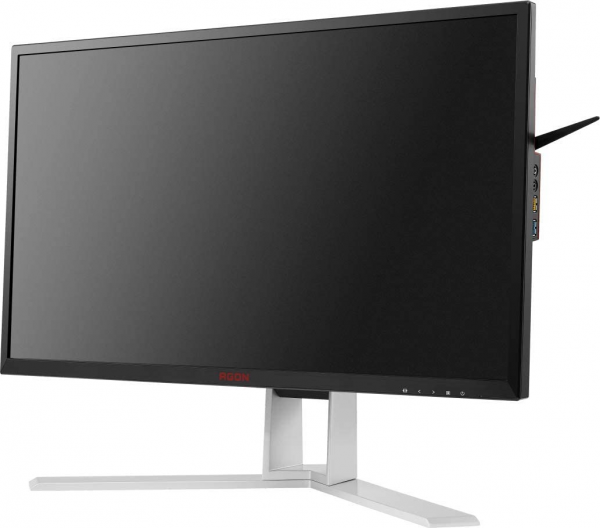
Colors and contrast
Default: average gray temperature: 6,790 K.
Default: gamma curve at 2.0.
Default: Average Delta E at 3.8.
Out of the box, the AOC AG271QX monitor displays a correct rendering, nothing more. Delta E is greater than 3 (threshold below which the human eye no longer perceives the difference). The average temperature is not far from the expected 6,500 K, but the curve lacks a bit of stability. Finally, the gamma curve bends slightly and the average at 2.0 results in slightly overexposed grays.
Manual adjustment: average gray temperature: 6,160 K.
Manual adjustment: gamma curve at 2.2.
Manual setting: Delta E medium at 2.4.
Fortunately, the gamma defect is corrected by choosing the gamma 3 setting. We then adjusted the brightness to 36 to obtain a white close to 150 cd / m². The temperature then drops, with an average of 6,160 K and a curve which is not always very stable. The gamma curve is still bending, but the average is 2.2 and above all, the delta E is less than 3, which results in faithful colors.
Calibrated: average gray temperature: 6,060 K.
Calibrated: gamma curve at 2.3.
Calibrated: Average Delta E at 2.7.
As often, calibration using a probe to generate a color profile helps stabilize the temperature and gamma curves. The gamma curve is finally linear with an average of 2.3, slightly higher than the expected value of 2.2. The temperature curve is flat, but the average remains somewhat low (6,060 K). This ICC color profile can be downloaded from the Focus Numérique website.
The contrast of 933: 1 is average for a TN type panel. The best representatives for this slab technology reach 1090: 1 at best, like the Iiyama B2483HSU-B1, but very few exceed 1100: 1. This contrast remains weak and the blacks lack depth. In broad daylight, this has no impact on the image, but at night, the film's black bands appear gray. This contrast remains in any case very far from that measured on the best VA panels, some models of which exceed a rate of 3000: 1 (Eizo Fortis FG2421 and BenQ BL2410PT).
The average difference in brightness uniformity is measured at only 5% over the entire 27-inch panel; an excellent value which allows to enjoy a certain uniformity on the whole screen. The model we tested was not affected by a clouding phenomenon.
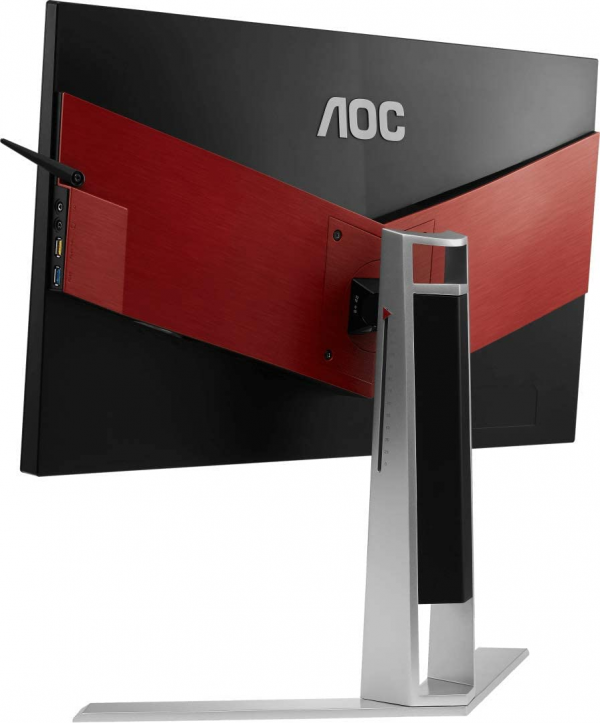
Reactivity
The AOC AG271QX monitor does not use Pulse Width Modulation (PWM) to adjust the brightness. It therefore does not flicker and does not cause headaches for those who are sensitive to it. This feature is called Flicker Free. AOC also offers a blue light filter on three levels.
This screen is compatible with FreeSync technology which allows the screen refresh rate to be dynamically calibrated on the number of frames per second produced by the graphics card, in order to avoid two things: the tearing phenomenon of image (tearing) and micro-slowdowns ( micro-stuttering). On the Agon AG271QX monitor, the FreeSync operates over a very wide range between 30 and 144 Hz. As long as the graphics card is capable of displaying between 30 and 144 images per second, the fluidity is therefore perfect. FreeSync technology only works with AMD Radeon graphics cards.
We measured the remanence of the screen at only 5 ms, whether on a light background or on a black background. It is quite simply one of the best reactivities that we have noted in our laboratory. We set the overdrive - disabled by default - to the medium setting. The latter improves the response time while limiting the ghosting effect. Conversely, setting it to High results in a marked reverse ghosting effect.
The delay in display (input lag) is measured at only 9.7 ms. There is thus no lag between the action on the keyboard and its repercussion on the screen. Attention, small feature of the AOC monitor, when using an HDMI source, you must go to the settings to activate the option "low input lag" to reduce the delay in the display to 10 ms instead 28 ms by default.
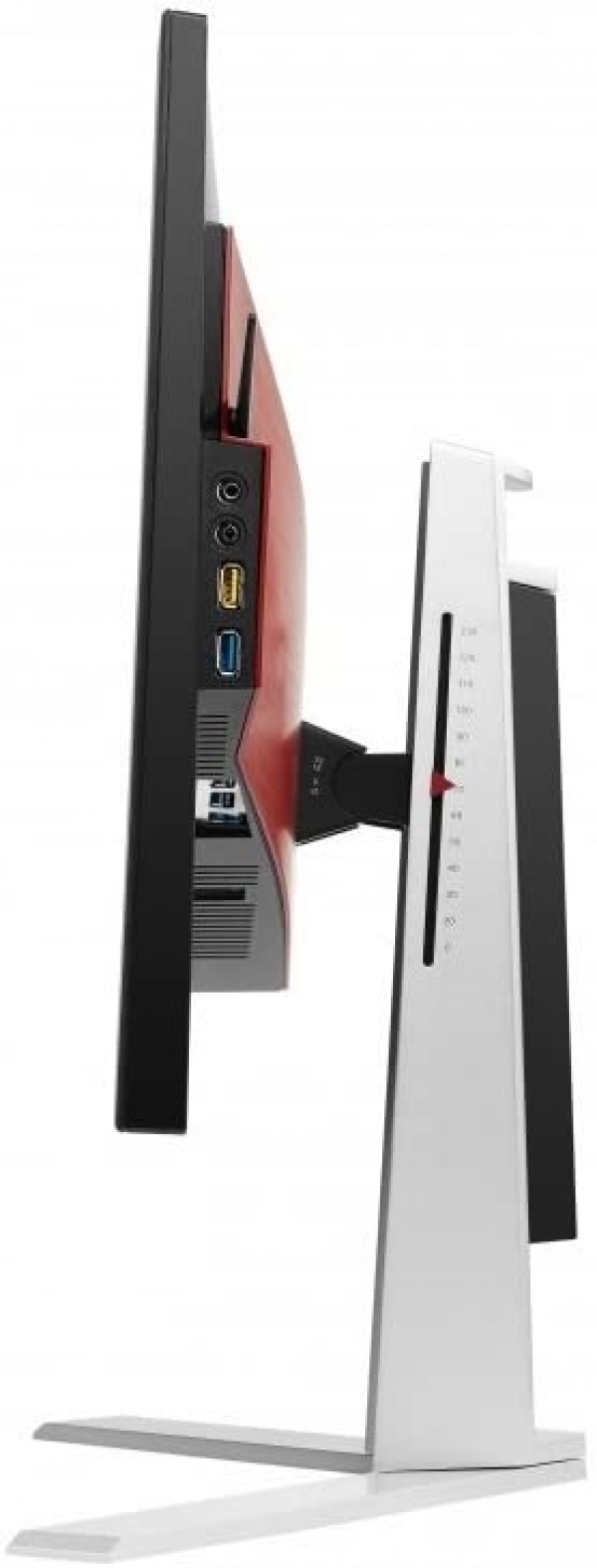
Conclusion
For an introduction, it is almost flawless. The AOC monitor will seduce all players with its reactive panel, its plethora of connectors and its perfect ergonomics. It lacks only a better default calibration to perfect the table, but the players will forgive him without problem. Finally, the TN panel still suffers from the same defects with limited contrast and reduced viewing angles, but it is also the most reactive technology on the market.
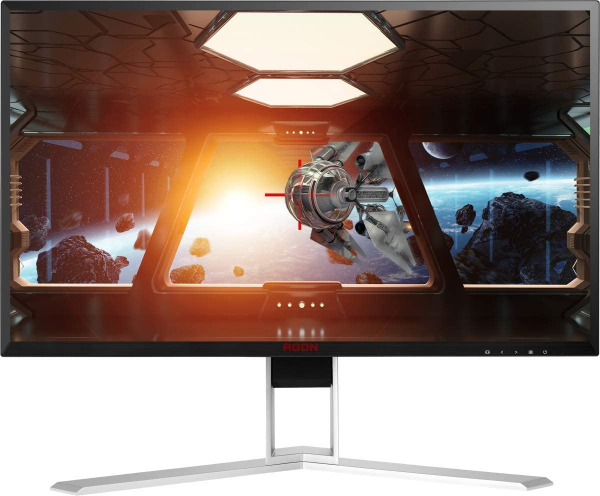
Specifications

